Lefkoşa, Nicosia or Lefkosia …all names for the last remaining divided city in the world, located in the centre of Cyprus. Lefkoşa is a large city with many districts, and we’ll give you a brief introduction to the heart of the city and its history.
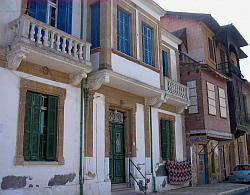
Lefkoşa has been the capital of Cyprus since the 7th century and was once a prosperous and prominent city for many. Buildings, monasteries and churches have been built in a prolific fashion during the city’s long history, but Lefkoşa has also unfortunately been a place of many conflicts – such as the invasion by the Marmelukes in 1426 and the subsequent arrival of the Venetians. They reduced the city in size and fortified it with the walls that still remain to this day. In the process of altering the city the Venetians also destroyed many fine examples of architecture spanning hundreds of years, including the resting place of the Lusignan monarchs.
In 1570 the city fell to the Ottoman Empire, and much like in other areas of Cyprus at this time, Lefkoşa fell in to disrepair and decay. There are but a few examples of Ottoman architecture left in the city today. The British arrived in Lefkoşa in 1878 and their mark on the city is evident with some wonderful Colonial style buildings, one of these now houses the central Post Office. However the British also 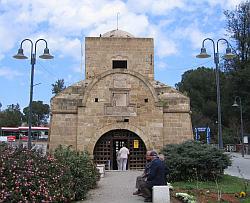 knocked down parts of the Venetian wall structure that would have been connected to the Kyrenia Gate, the entrance to the city, which now stands on its own. This was done in the name of allowing traffic to flow more freely apparently!
knocked down parts of the Venetian wall structure that would have been connected to the Kyrenia Gate, the entrance to the city, which now stands on its own. This was done in the name of allowing traffic to flow more freely apparently!
In 1963 Lefkoşa was effectively divided into Greek and Turkish areas to suppress clashes between the two communities; the Green Line was firmly established by a British Military Commander who famously took a map and drew a line with a green pen to divide the city for the sake of peace. The name for the border that divides the two Cypriot communities has been known as the Green Line ever since. The division became absolute and formalised in 1974.
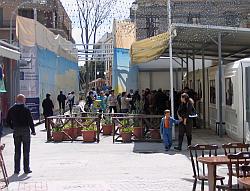 The Green Line is now open, (as of 2008), via the Lokmacı Crossing which is located in the heart of the city near to the market centre. To cross the border to the south at any of the check points you will need a valid passport and you will also need to fill in a short visa form which is available from the passport control offices on the Turkish Cypriot half of the border. The fact that since 2004 EU citizens are free to cross from one side of the city to the other means that we can now all enjoy Lefkoşa as a whole, and get a better understanding of the Cypriot people and a wider appreciation of Cyprus.
The Green Line is now open, (as of 2008), via the Lokmacı Crossing which is located in the heart of the city near to the market centre. To cross the border to the south at any of the check points you will need a valid passport and you will also need to fill in a short visa form which is available from the passport control offices on the Turkish Cypriot half of the border. The fact that since 2004 EU citizens are free to cross from one side of the city to the other means that we can now all enjoy Lefkoşa as a whole, and get a better understanding of the Cypriot people and a wider appreciation of Cyprus.
There are a myriad of sights to see in Lefkoşa, many of the most ancient ones are now being aided and improved by various restoration projects funded by the UN and European Union, and the city also has one of the largest arts and cultural centres in North Cyprus. Many of the historical buildings, museums 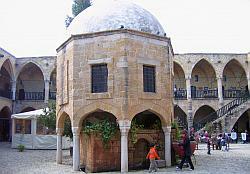 and monuments are located on the Blue Line walk, a project created by the UN to identify a circular route that visitors can take to tour these sites. There are many more sites and sounds and experiences to be had in Lefkoşa, so do take time to read through our related articles covering museums, walking tours and sightseeing opportunities which will give you plenty of food for thought on what to do and where to go in Lefkoşa. It really is a great city!
and monuments are located on the Blue Line walk, a project created by the UN to identify a circular route that visitors can take to tour these sites. There are many more sites and sounds and experiences to be had in Lefkoşa, so do take time to read through our related articles covering museums, walking tours and sightseeing opportunities which will give you plenty of food for thought on what to do and where to go in Lefkoşa. It really is a great city!

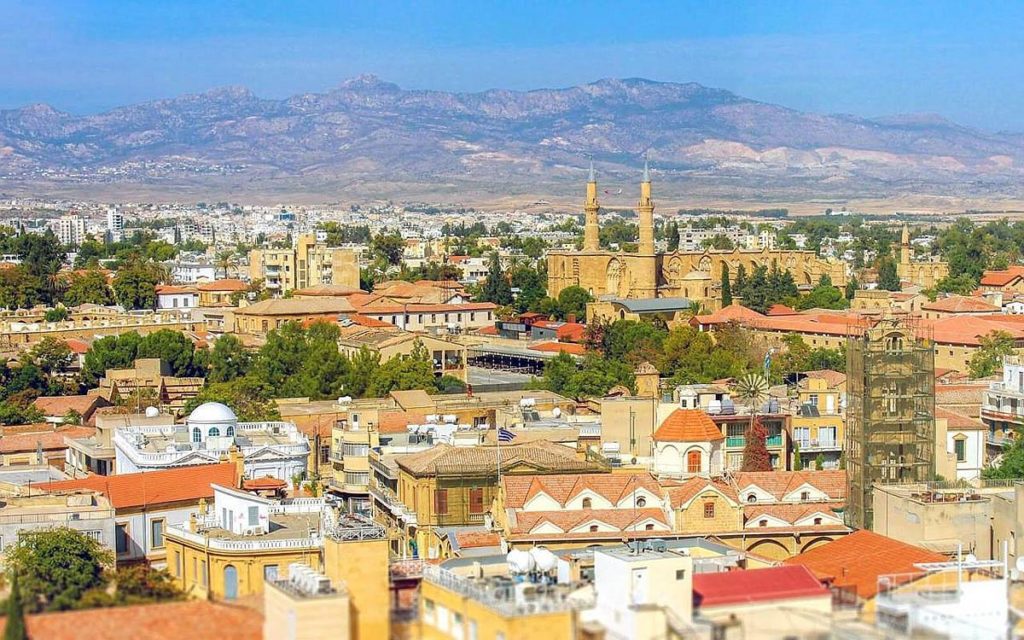
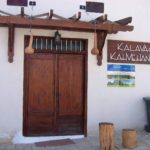

1 Comment
Please give me name and telephone number on a shop in Lefkosia (north Cyprus) with yarn.